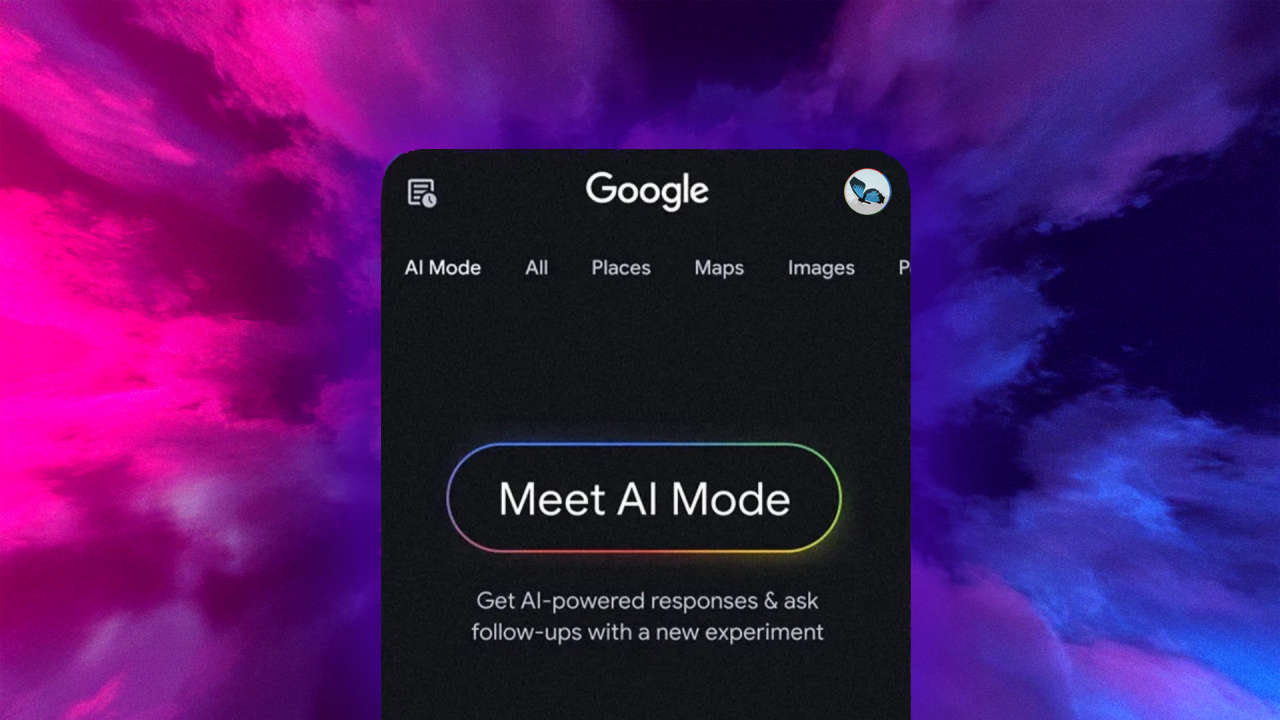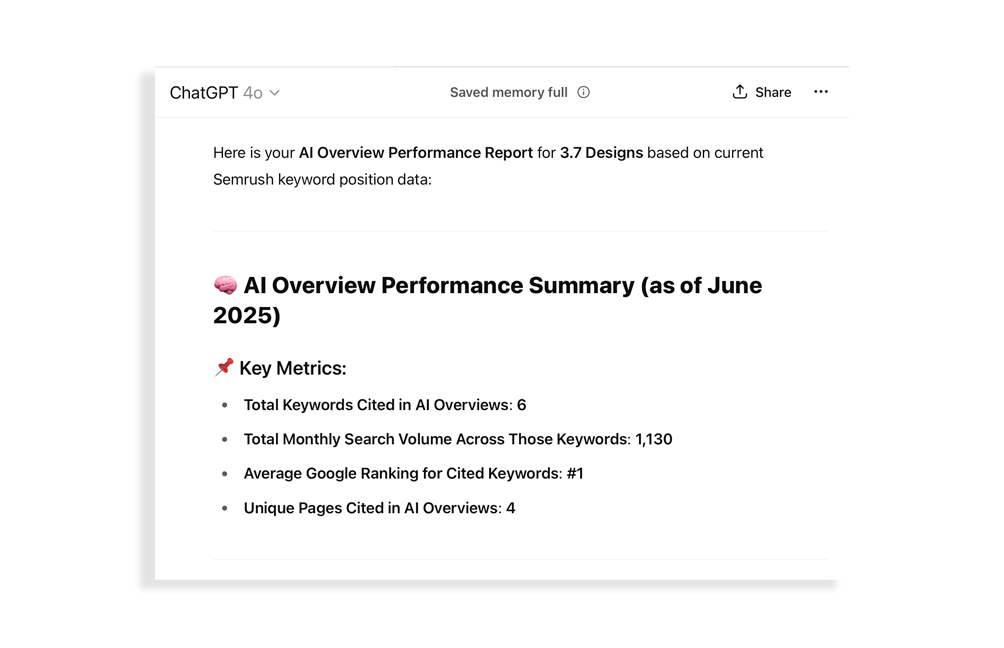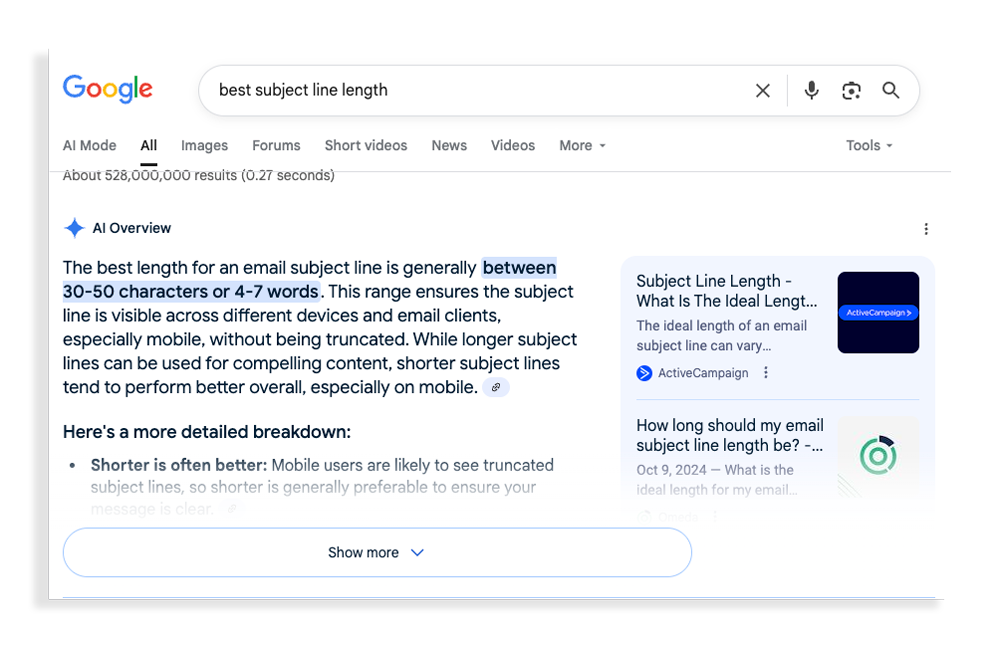- AI Optimization
- Digital Marketing
- Search Engine Optimization
- Updated 09/04/2025
Google AI Mode Is Here: What It Means for SEO, Visibility, and Staying in the Conversation
Summarize this post

Let’s skip the hype: Google AI Mode is live, and it’s changing how search works, dramatically.
What used to be a one-and-done query is now a conversation. Users ask a question, get a machine-generated summary, and then keep digging, refining, or rephrasing—all within Google’s AI-powered interface.
This isn’t the same game SEOs have been playing.
This is a shift from ranking once to earning relevance across an evolving thread.
If you want your brand to show up, and stay visible, you need to rethink how your content is structured, cited, and connected.
From ChatGPT to Google AI: Same Brain, New Surface
If you read Ross’ post on how to rank in ChatGPT, you already know that large language models (LLMs) decide what to recommend based on a mix of brand authority, topical fit, and third-party validation. That practice is called Generative Engine Optimization (GEO).
Google’s AI Mode uses the same underlying logic, but applies it directly inside the SERP, in real time. It’s not just about recommending products. It’s about surfacing the right content, again and again, as the user keeps refining their question.
What is Google AI Mode (and how is it different from AI Overviews)?
AI Overviews were the first phase—brief, machine-generated summaries pulled from a few trusted sites and shown above the traditional results.
With AI Mode, users can now:
- Explore follow-up questions
- Narrow or broaden their focus
- Stay in a thread without ever leaving the search experience
And here’s the key: Google remembers what it cited first. If your content powers the first answer, your chances of being cited again across turns increase dramatically.
The real SEO shift: from “rank once” to “relevance over time”
AI Mode has turned SEO from a snapshot into a storyline.
What that means:
- Your content must answer now and what comes next.
- You need semantic depth—not just keywords.
- Trust signals and structure carry forward across turns.
This is less about gaming the algorithm and more about being the most helpful, trustworthy, and context-aware source in the room.
Five actions to optimize for visibility in AI Mode
1. Restructure your top pages for layered interaction
- Lead with a TL;DR. Give the AI (and your reader) a two-sentence takeaway that can stand alone in the conversation thread. E.g., “Email open rates rise when subject lines are <45 characters and preview text echoes the first 40 words.”
- Phrase H2s as follow-up questions. Think “What is a good open-rate benchmark?” instead of “Open-Rate Benchmarks.” This mirrors the way users—and AI Mode—extend the conversation.
- Create jump links to deeper assets. If you have a downloadable benchmark report or an ROI calculator, link to it right after the initial answer so both humans and bots know where to go next.
2. Build interconnected topic clusters (not content silos)
- Map the “next five questions.” For every pillar, list the five most common follow-ups a real prospect would ask. Each becomes its own support page.
- Cross-link with intent-rich anchors. Swap “learn more” for “email timing best practices” so Google’s LLM sees the semantic connection.
- Refresh clusters quarterly. AI Mode rewards freshness; a light update (new stat, recent case study) can reset Google’s “last crawled” clock.
3. Include credibility signals LLMs recognize
- Show the human behind the insight. Add a one-line credential (“Written by Melissa James, HubSpot Certified Trainer”) under the headline.
- Surface original data or quotes. Even a small proprietary stat (“38% of our B2B clients saw…” ) helps differentiate your content from generic AI fodder.
- Timestamp transparently. “Updated June 2025” reassures both readers and algorithms that your info is current post-core-update.
4. Track “AI Visibility” metrics—not just traffic
Organic clicks may decrease, but that doesn’t mean you’re losing. Update your KPIs to reflect the new model:
- AI Overview appearances
- Impressions on conversational queries
- Increases in brand searches
- Time on site from AI-related entry points
Pro tip: Combine these with your GEO metrics (e.g., ChatGPT recs, Gemini mentions) to build a complete AI Visibility Report.

5. Strengthen your off-page authority
To stay visible in AI Mode, your site needs more than great content, it needs recognition across the digital ecosystem.
As Ross documented in his GEO experiment, LLMs are influenced by signals beyond your website, including:
- Analyst reports from trusted sources
- Peer review platforms like G2 and Capterra
- Community forums (Reddit, Quora, etc.)
- Comparison articles and buyer guides
Here’s how to build that footprint:
- Publish original data that others want to cite—think benchmark studies or survey results.
- Pitch expert quotes to journalists and bloggers in your space; third-party mentions carry weight.
- Contribute to roundups and curated lists where your brand appears alongside others.
- Repurpose cornerstone content into highly shareable formats like infographics, LinkedIn carousels, or short videos. Create assets that attract backlinks and spark discussion.
Do AI Overviews still matter?
Yes—but the way they matter is shifting.
AI Overviews are often the on-ramp to deeper user intent. They show up when someone asks a quick question or searches for a common how-to—queries like “best subject line length” or “how to write a UX case study.” These summaries can be the first impression your brand makes.
That first impression matters.

Why? Because what Google cites in the Overview often gets remembered in AI Mode—and reused as users continue the thread. If your content helps shape the initial summary, you’re not just showing up once; you’re influencing where the conversation goes next.
But here’s where many brands miss the mark: they optimize for the Overview, and stop there.
To stay visible beyond that first paragraph, you need to treat the Overview as the starting block, not the finish line. That means:
- Tight, TL;DR-style intros to qualify for the first summary
- Clear, helpful answers that encourage follow-ups
- Schema that signals structure and authority (e.g. FAQ, HowTo, Article)
- Content depth that supports follow-up questions within AI Mode
It’s not about chasing the zero-click headline. It’s about anchoring your relevance before the conversation deepens.
Think of AI Overviews like your content’s handshake. If it’s strong and trustworthy, Google may invite you to stay for the full conversation.
Final thought: Win the thread, not just the click
AI Mode doesn’t mean SEO is over. It means it’s finally acting more like the people it serves.
That means your strategy needs to evolve:
- From single-intent keywords to full-topic ecosystems
- From copying competitors to showing original thought
- From ranking once to being recalled repeatedly
If you’re ready to earn visibility in AI Mode and appear across LLM platforms like ChatGPT, Gemini, and Claude, let’s talk!
We’ll help you structure, optimize, and position your content to show up at the start of the conversation—and stay in it until the decision is made.